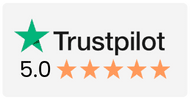Introduction
Imagine waking up to find your website defaced, redirecting visitors to strange pages, or completely inaccessible. Terrifying, right? A hacked website isn’t just a technical glitch, it’s an attack on your business reputation, customer trust, and financial stability. In today’s digital age, where cybercriminals are constantly on the prowl, knowing how to recover and protect after a hacked website is a survival skill for every business owner. The longer you wait, the more damage is done stolen data, lost revenue, blacklisting by Google, and frustrated customers. But here’s the good news: you don’t have to face it alone. With the right steps and the professional expertise of IT Company, you can bounce back stronger, secure your digital presence, and prevent future hacks before they even happen. This guide walks you through warning signs, recovery steps, and long-term protection strategies—all designed to help you regain control of your hacked site and keep it safe for the future.Understanding the Impact of a Hacked Website
Common Signs Your Website Has Been Hacked
- Strange redirects to unfamiliar websites
- Defaced pages or odd content you didn’t publish
- Sudden drop in website performance or repeated crashes
- New admin accounts appearing without your approval
- Browser or Google alerts such as “This site may be hacked”
Why You Can’t Ignore a Website Hack
- Data Theft: Customer information and business data could be stolen.
- Loss of Rankings: Search engines may blacklist your website, burying it in search results.
- Trust Issues: Customers lose confidence when they see hacked content or security warnings.
- Financial Damage: Downtime and repair costs can quickly pile up.
Immediate Steps to Take After a Hack
Take Your Website Offline
Notify Your Hosting Provider and Users
- Contact your hosting provider so they can assist with server-level issues.
- Inform your users if there’s a chance their data was compromised. Transparency builds trust.
Identify the Type of Attack
- Malware Injections stealing sensitive data
- SQL Injections manipulating your database
- Phishing Pages tricking users into giving away information
- Ransomware locking your site until payment is made
Recovering Your Website Safely
Change All Passwords Immediately
Update passwords for admin, FTP, hosting, and databases. Use strong, unique combinations and activate two-factor authentication (2FA).Restore From a Clean Backup
If you’ve got a safe, recent backup—restore it. This is one of the fastest ways to bring your site back online.Remove Malware and Suspicious Files
- Use professional malware removal tools.
- Scan and delete unfamiliar scripts.
- Remove unauthorized admin accounts.
Get Professional Help from IT Company
Fixing a hacked website on your own can be overwhelming and risky. That’s where IT Company comes in. Their expert team provides:- Complete malware removal
- Security patching
- Safe website restoration
How to Protect Your Website After Recovery
Keep Everything Updated
Outdated CMS, plugins, and themes are hacker magnets. Update them regularly.Install SSL Certificates
SSL encrypts all communications, making it harder for hackers to intercept sensitive information.Deploying a Web Application Firewall (WAF)
A WAF filters out malicious traffic before it even touches your site.Schedule Regular Security Audits
With 24/7 monitoring from IT Company, any suspicious activity can be detected and neutralized early.Best Practices to Prevent Future Hacks
- Use Secure Hosting: Partner with providers that prioritize security.
- Apply the Principle of Least Privilege: Give each user only the access they need.
- Daily Automated Backups: Protect yourself with recoverable backups.
- Train Employees in Cybersecurity: Reduce risks caused by human error.
Why IT Company Is Your Best Defense
Rapid Recovery Services
From malware cleanup to code repair, IT Company ensures your hacked site is restored quickly and securely.24/7 Threat Monitoring
Cyber threats never sleep—and neither does IT Company. Their proactive monitoring means threats are stopped before they can spread.Custom Cybersecurity Solutions
Every business is unique, so IT Company creates tailored security strategies including firewalls, hosting, and staff training.FAQs
What’s the first step if my website is hacked?
How fast can IT Company restores a hacked site?
In most cases, IT Company restores websites in hours, not days.
Can I fix a hacked site myself?
You might handle minor issues, but for complete recovery and long-term security, expert help is essential.
Subscribe
Login
0 Comments
Oldest


















